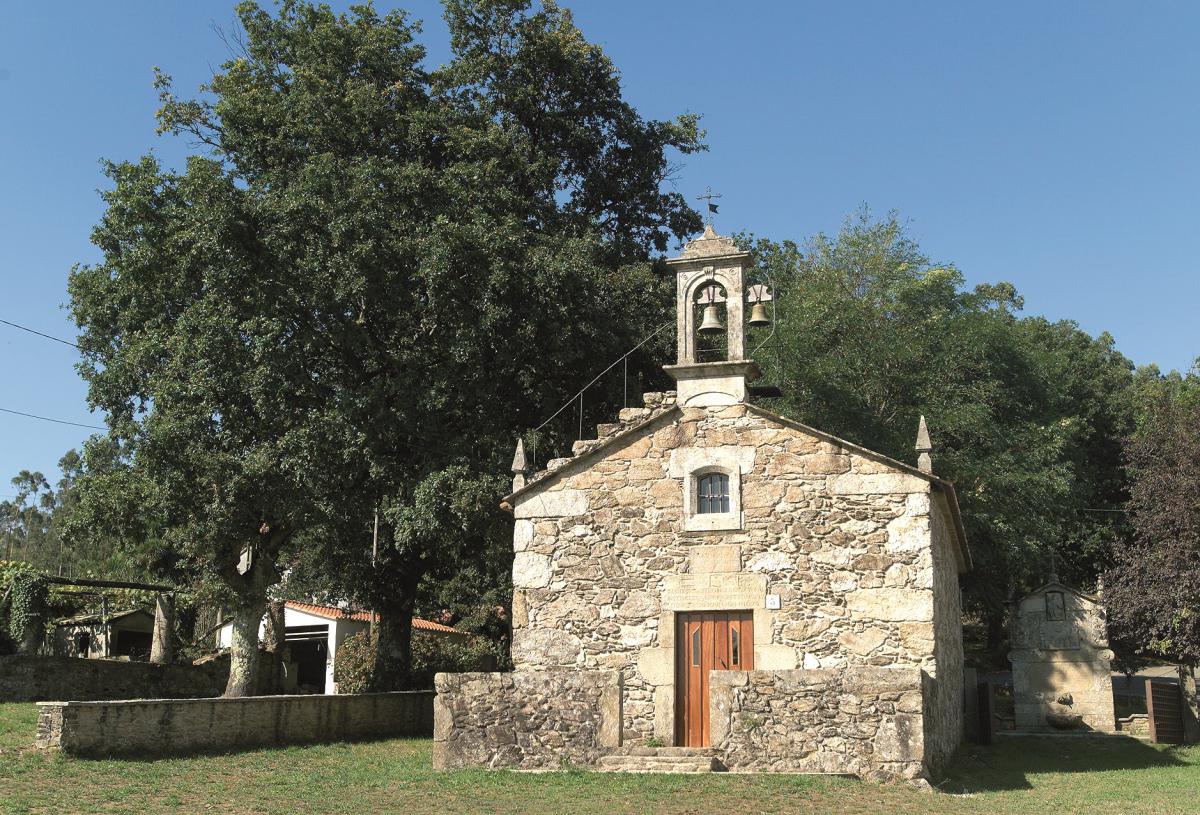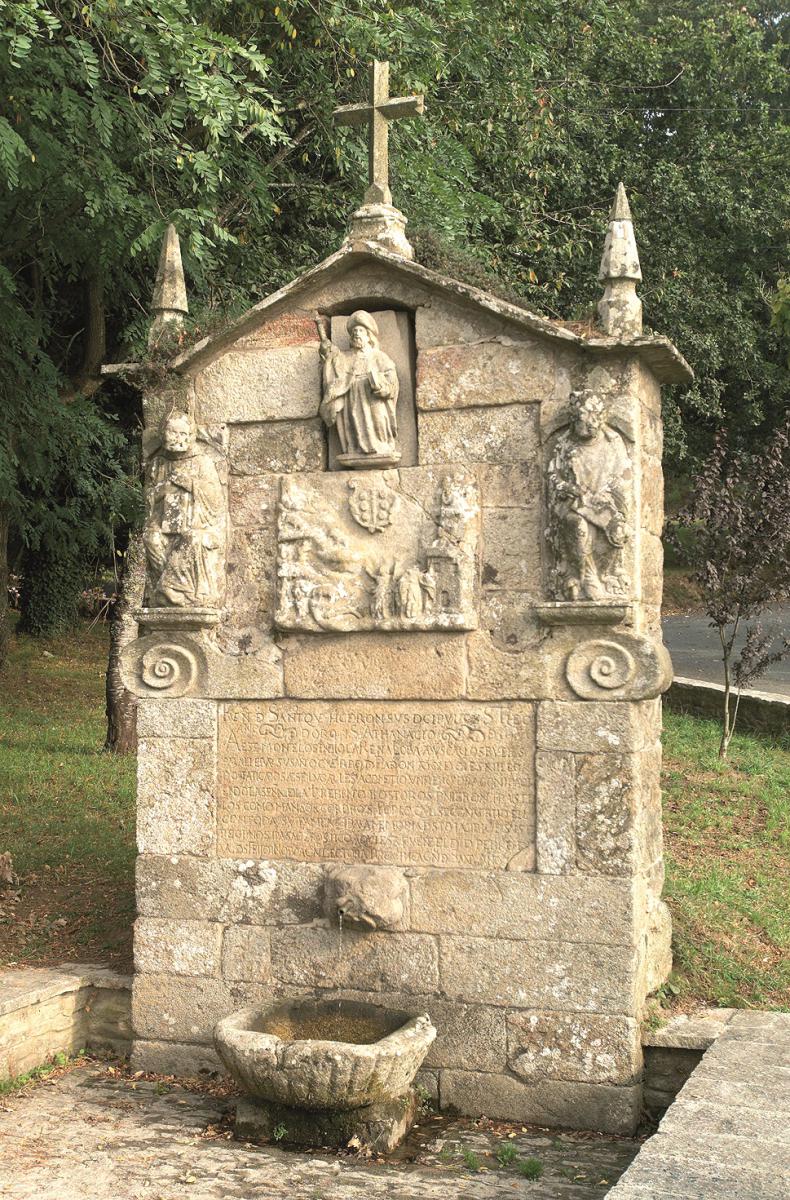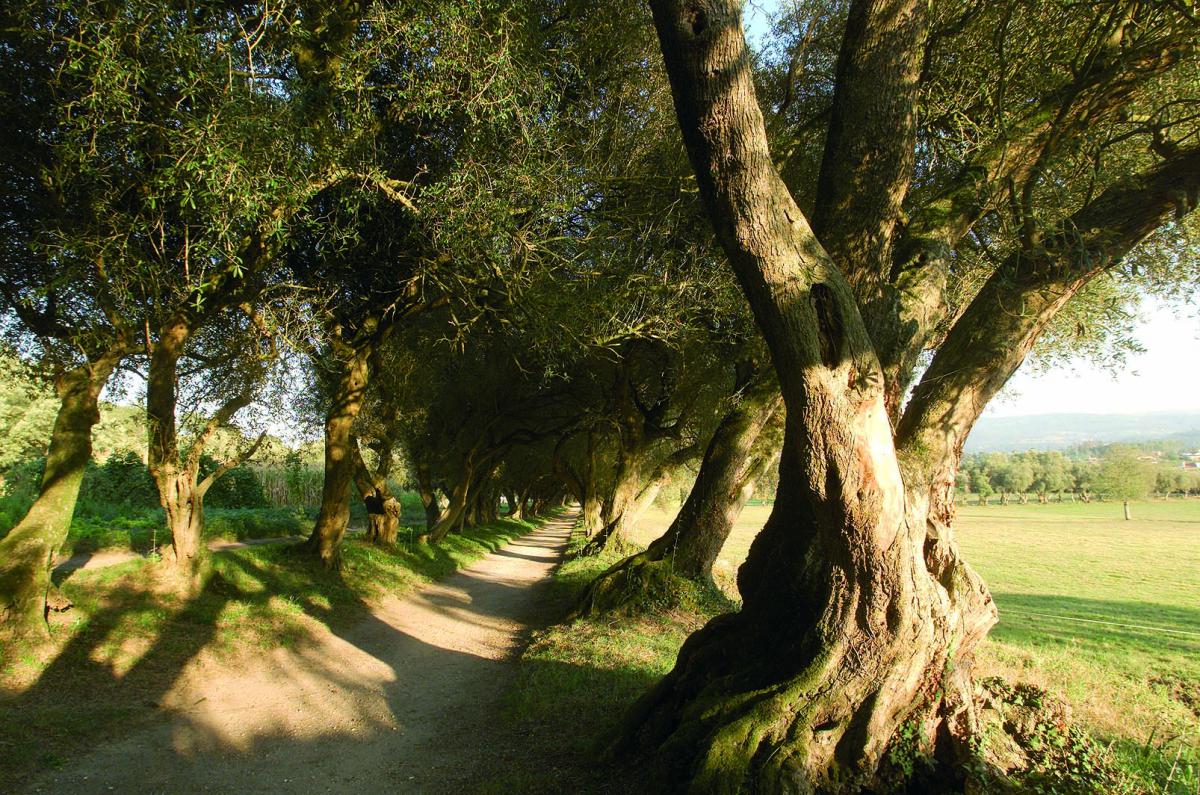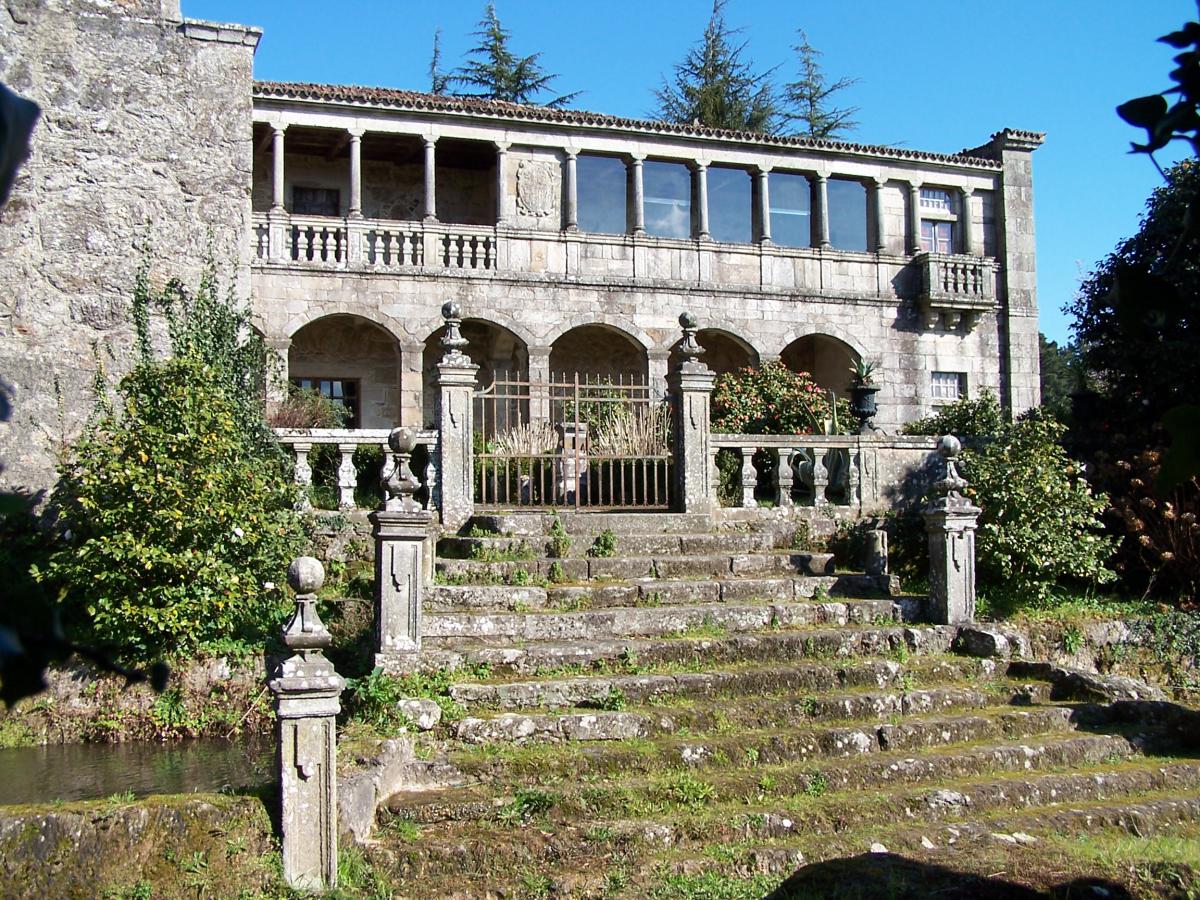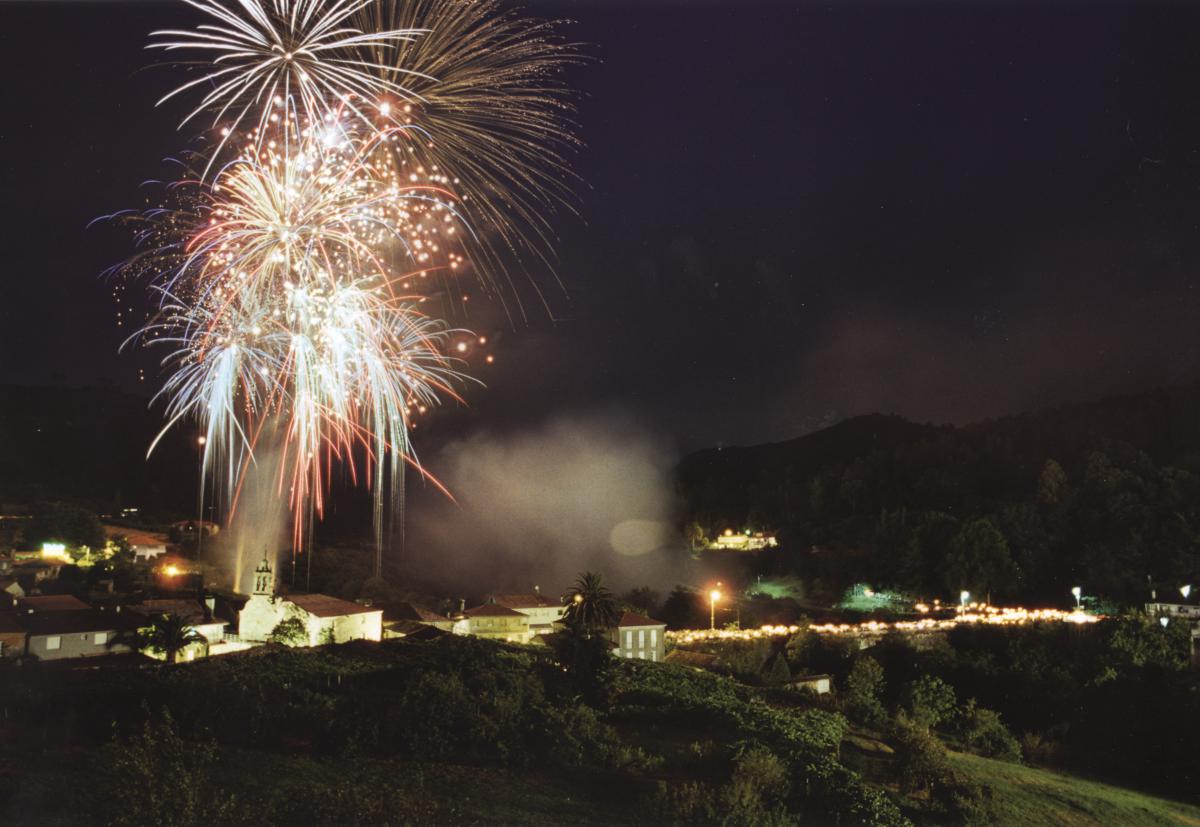Not to be missed
- Pazo de Santa Cruz de Ribadulla
It is also known as Pazo de Ortigueira and it is sheltered by Pico Sacro. It was declared Monument of Cultural Interest. Inside there is Galician’s Renaissance garden par excellence, where camellias stand out.
For further information:
981 51 20 11
Opening hours:
Private property whose gardens can be visited at the following times:
Winter:
onday to Saturday from 10am to 1pm and from 3 to 6pm
Summer:
Monday to Saturday from 10am to 1pm and from 3 to 7pm
Sundays and public holidays:only in the afternoon.
The last visit begins half an hour before closing time.
Prices:
Free: Monday morning .
General ticket: 5 € /person.
Group ticket: 2,5 €/person (minimum 50 €).
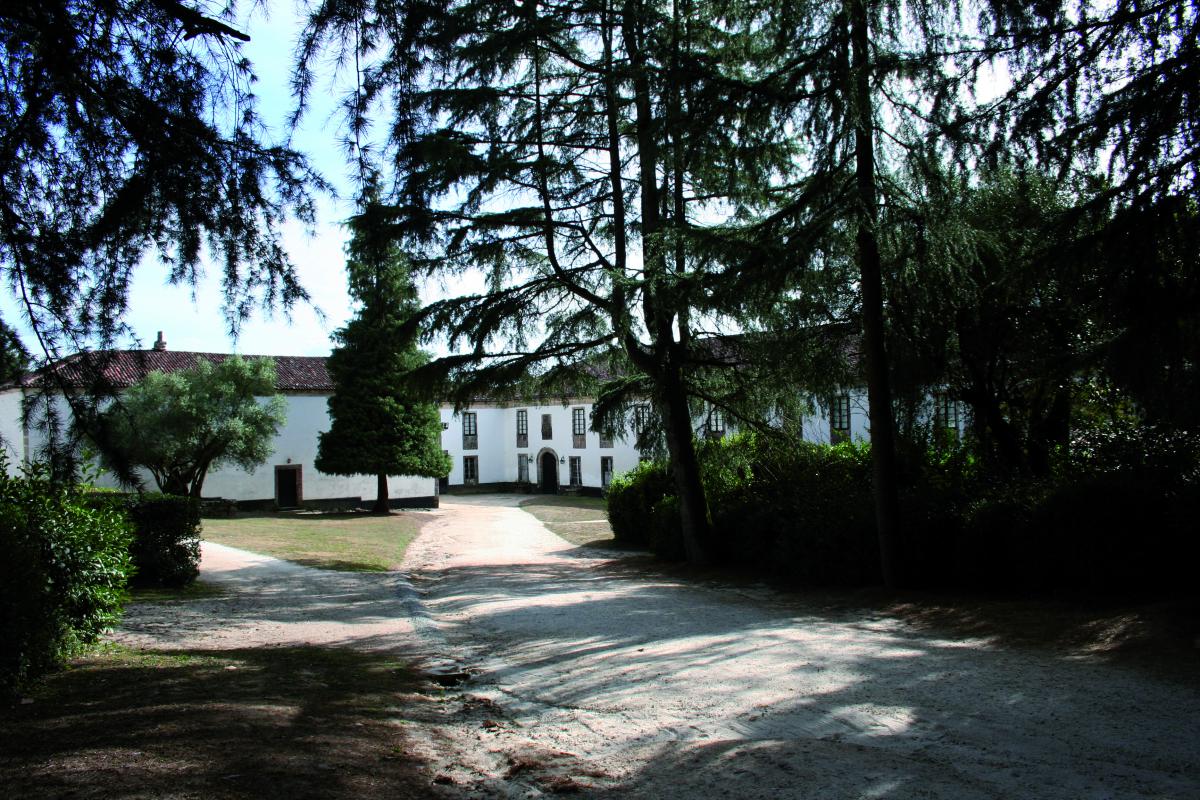
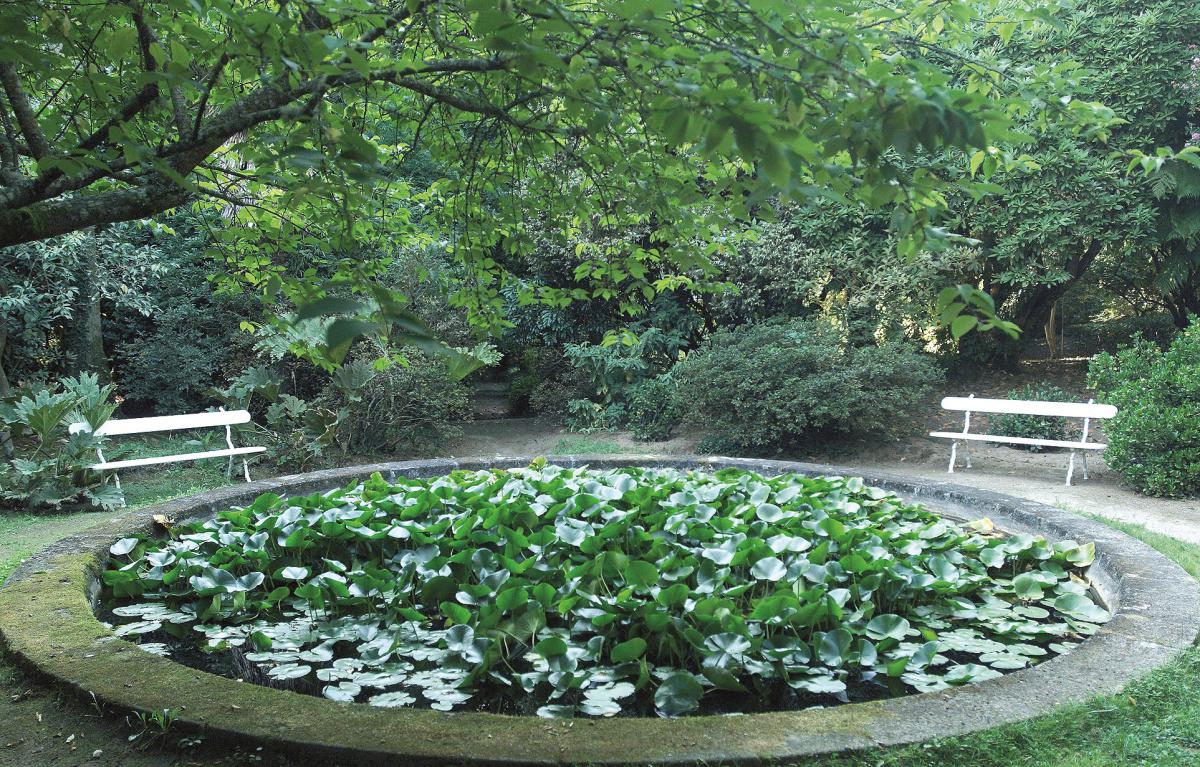
- Gundián Viewpoint
The Gundián Viewpoint provides views of a magnificent natural setting. What stands out first of all is Paso da Cova, which arises when the south slope of Pico Sacro, which features a 4-kilometre-long vein of quartz, is cut through by the River Ulla, with Monte Castro on the other side. The result is an unique and singular site, a magnificent narrowing of the river down to 4 metres wide between two vertical 50-metre-high walls along a distance of 14 metres. This pass is now crossed by a railway bridge, the Old Gundián bridge and a modern bridge for the high-speed AVE train; it stands out as the only terrain south of the River Ulla belonging to the province of A Coruña.
According to different legends, there used to be a large lagoon upriver. As the story goes, hidden among the rocks near the present-day Paso da Cova, there was a 14th century monastery of the Templars (of which no trace remains). Tradition adds that the monks of this monastery of San Xoán da Cova perforated the mountain to empty the lagoon, thereby giving rise to this narrow pass.
Today, both the Gundián Viewpoint and the Campo de Gundián Recreational Area enable us to enjoy this marvellous natural setting.
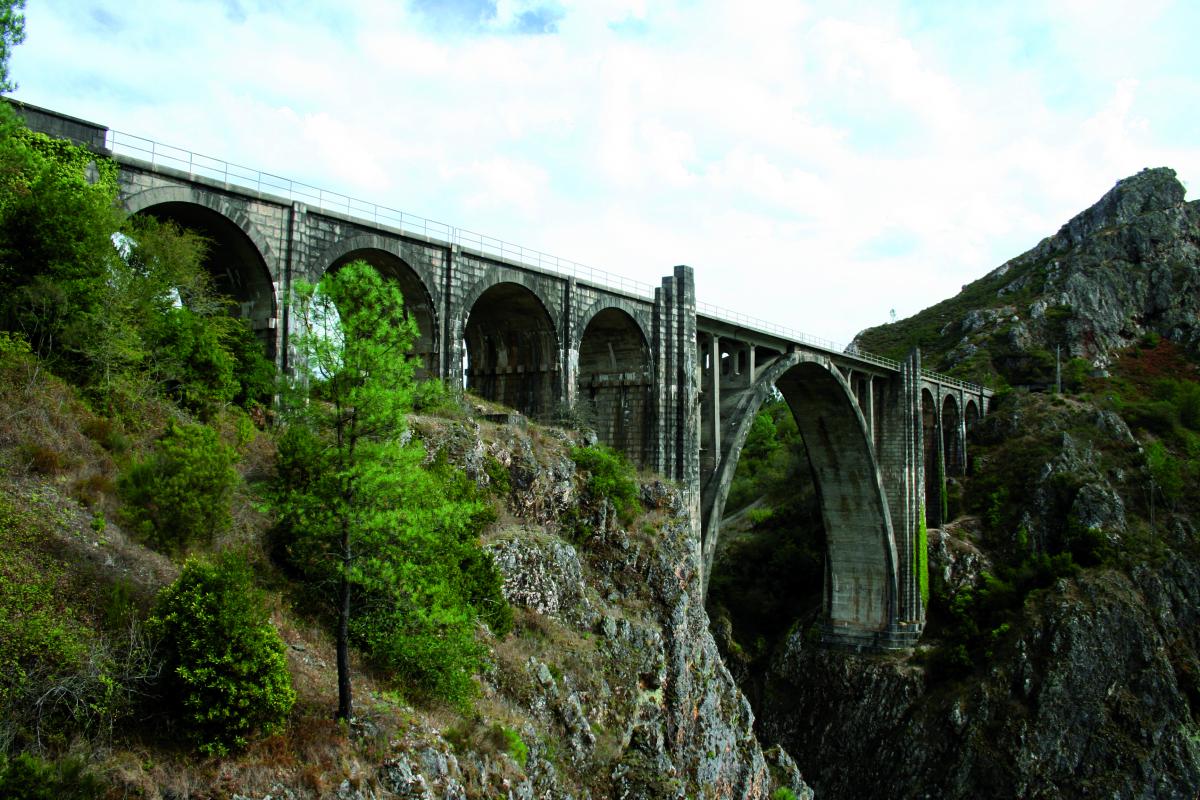
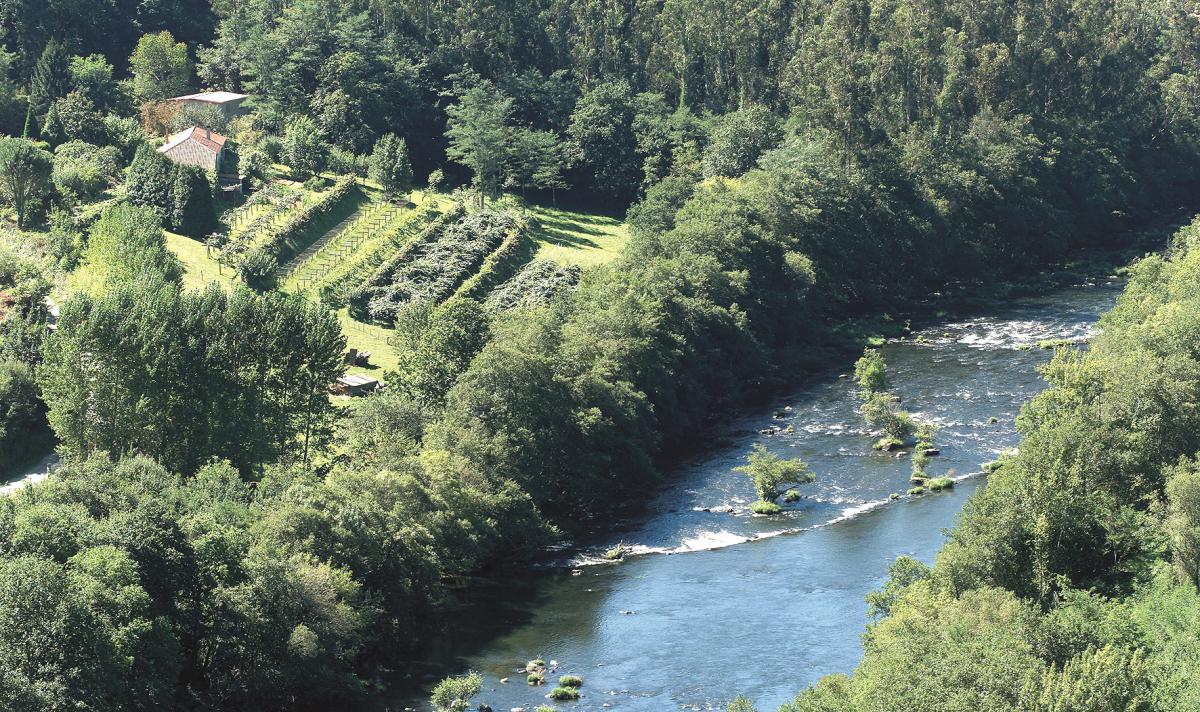
-
Waterwheel Interpretation Area
A group of mills on the Merín River which represents a magnificent ethnographic ensemble and formed an important part of previous generations’ lives.
There are four restored mills. The first one is Muíño Novo (New Mill); the second one is Muíño de Cebeiro (Cebeiro’s Mill) as Cebeiro was the owner’s surname. The third one is Muíño do Coxo (Lame’s Mill) as its owner had a wooden leg and the last one is Muíño da Porta Roxa (Mill with a red door) although the door is no longer red.
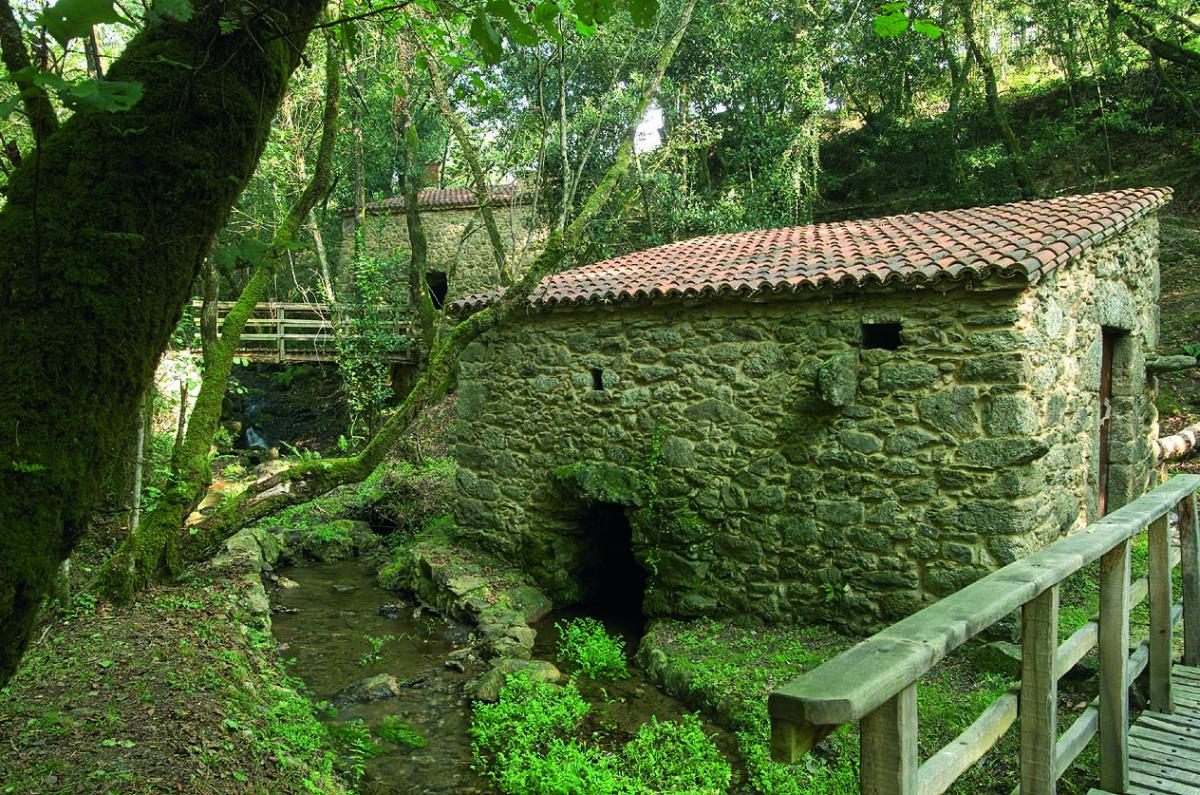
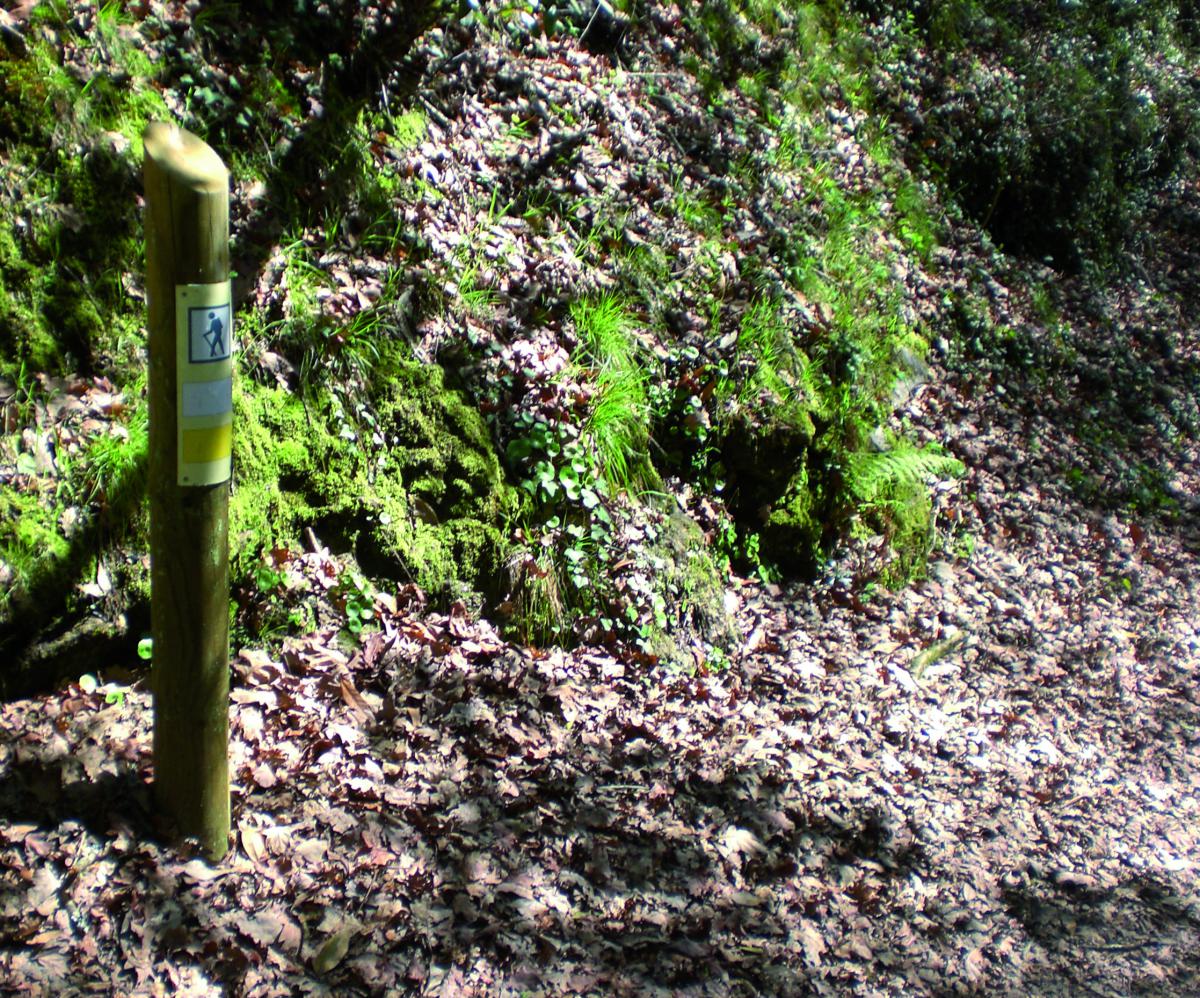
- Coto de Ximonde
It is one of Galicia’s most important salmon-fishing preserves. It houses a fish-breeding and reproduction station and the River Ulla interpretation centre. The fishermen’s shelter, the fishing posts, the waterfall and its hanging bridge are also worth a visit.
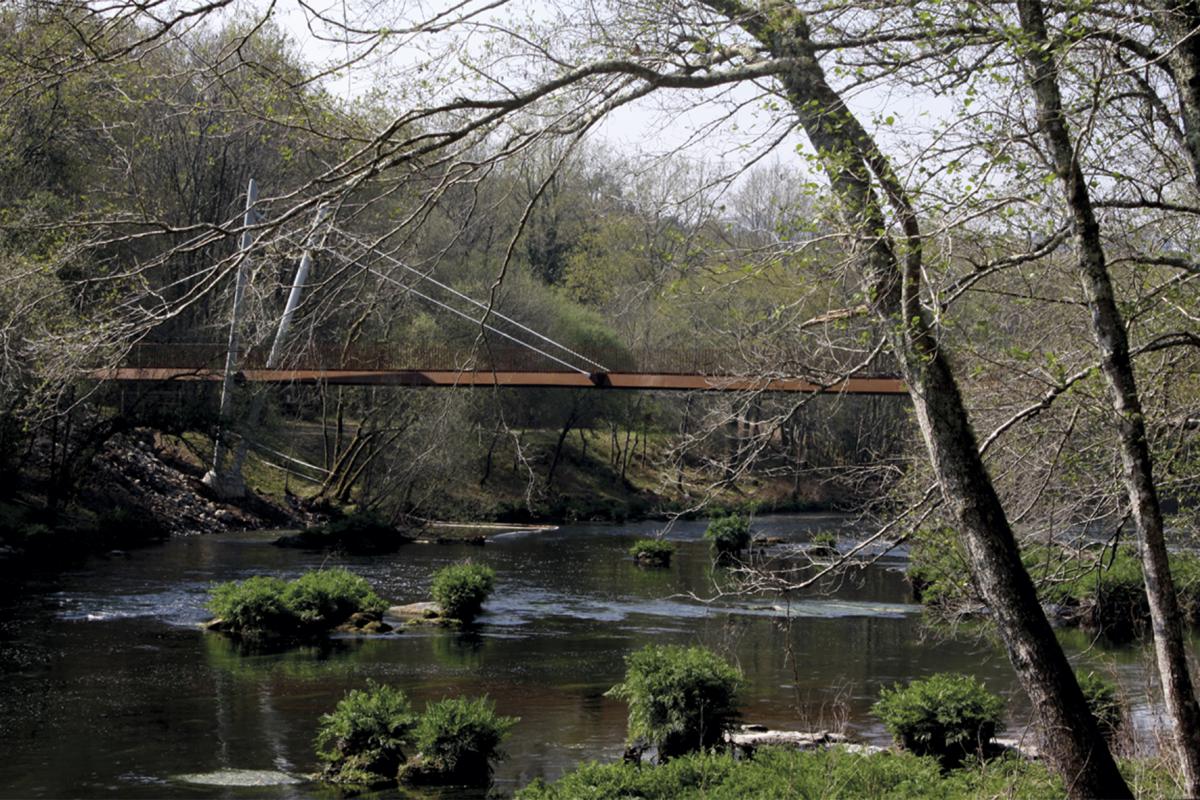
- Church, fountain and stone cross of Vedra
The parish church of Santa Eulalia de Vedra is located on a high spot dominating the entire valley, accompanied by a stone cross and a fountain at the foot of the atrium. It is worth mentioning the main chapel’s altarpiece from the end of the 18th century made by Jose Gambino. He also made the image of Santa Eulalia, the patron saint of the parish. The other two altarpieces are slightly older and were made by Francisco de Moas, who belonged to the school of Miguel de Romai. They are found in the two chapels at the sides of the naves and their main themes are the “Virgen de los Dolores” or “Virgen de la Soledad” in one case, and Christ tied to the column, accompanied by other images, in the other. The historian and archaeologist López Ferreiro was the parish priest in this church from 1866 to 1871.
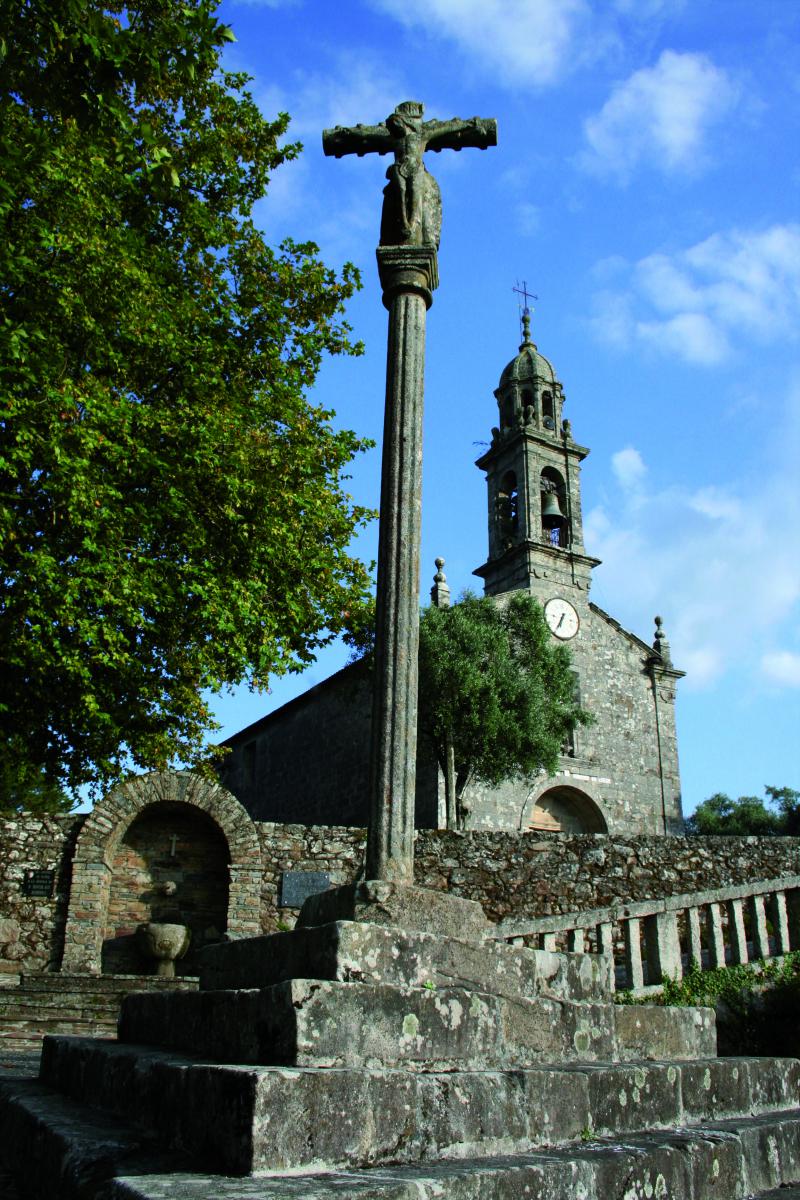
-
Chapel and fountain of Santiaguiño
The chapel of Santiago, located in the village of Outeiro in the parish of San Pedro de Vilanova, was built in the 18th century.
Beside it is a small baroque fountain that was moved to its current location from a spot higher up in 1724. It features, sculpted in relief, the legend of the Dragon, related to the sagas of Queen Lupa. It also bears an inscription describing the transfer of the Apostle James’ body. At the centre of the fountain there is a representation of the Apostle with his disciples Teodoro and Atanasio. According to some authors, these two figures came from Santiago Cathedral’s former Romanesque choir, made by Maestro Mateo.
A few metres from the chapel, we find the last hostel on the “Vía de la Plata” Route before reaching Santiago de Compostela
